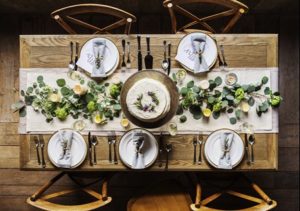There are many elements to interior design. Color, light, lines, shapes (forms) and texture are all applied principles of design that are immediately noticeable in a room. These principles also apply when building and decorating exterior rooms. One design element that is often overlooked on the patio is texture.
“Texture” is a visual as well as tactile element of a room. When we talk about texture in a room, we speak about the features of surfaces. “Smooth” is officially a kind of texture, but when we talk about texture in design, we are referring to surfaces and materials that aren’t smooth to the touch or look smooth to the eye. Interwoven or uneven traits are part of a material’s texture.

Because few things in nature are smooth or flat, adding texture addresses the need for organic lines and forms. If you have a patio or outdoor kitchen, chances are right angles dominate the space. Clean lines are lovely, but too much line and not enough soft edge can make a space feel clinical. To avoid looking too rigid, add textured walls, fabrics, and surfaces to help soften your Hardscape.
Here are some ways to add some depth and interest to your outdoor decor. We have suggestions for existing patios and new patio installations.
Inherited patios
Buying a home with an established outdoor space can be a stroke of genius. A move-in-ready patio is perfect for immediately enjoying the home fully, inside and out. Add some texture by incorporating different fabrics, floor coverings and furniture materials. Woven blankets, pergola shades, umbrellas, table accessories, area rugs, and cushion covers are opportunities to add visual depth and tactile interest.

Acrylic, olefin, polyester, canvas and cotton fabrics are the most commonly-found outdoor fabrics for cushion covers, shades, umbrellas, and tablecloths. Outdoor rugs are often made of the manufactured materials like nylon and polyester. Look for “fade resistant” and “weather resistant” labels. A visual texture can be found on a smooth surface in patterns or mottled colors (like marble). A tactile texture is found in the weave of a fabric or the varied levels of the surface (i.e. not smooth or flat).
When making a choice for your already-established patio, consider adding texture where possible.
New Installations


As with the inherited patio above, many opportunities exist for adding texture to an outdoor room. Fabrics are a good place to start when we want to bring in some natural lines and depth to a patio. If you are starting from scratch, then a few more key opportunities to incorporate texture arise.
Patterns in pavers add a design element to the space. Smooth-surfaced patio pavers can still convey depth using color and pattern. Many patterns and organic (non-patterned or random) layouts are available for paver installations.
Another option is to choose a patio paver that has a textured or aged surface, like our Chiseled Stone or Society Hill Brickstone. Textured pavers may be modeled after natural stone or aged brick. A patio of textured stone is its own organic element. If you have a new patio project on the horizon, consider these types of patio pavers.

Look around your Hardscape for ways to add layers of texture with patterns and color or woven fabrics. Adding visual depth and touchable surfaces to any outdoor room will make the area feel more welcoming for you and your guests